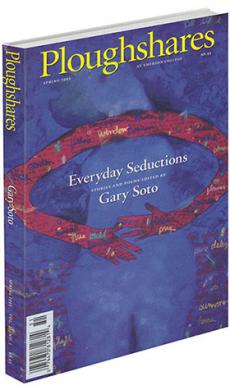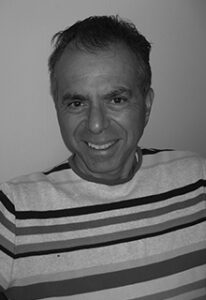rev. of Wild Ride by Bia Lowe
Wild Ride
Essays by Bia Lowe. HarperCollins, $20.00 cloth. Reviewed by Bonnie Friedman.
Bia Lowe’s lovely first book,
Wild Ride, uniquely combines nature essays with personal narrative. Each piece — composed of succulent, sweet prose — is a thought pagoda, ideas storied one atop another, from sneezes to alfalfa to sexual betrayal to Halley’s comet to urban animals to an image of her newlywed parents conceiving her: “Their cells mingle hundreds of times before a fluke will yank me from the Void.”
Lowe uses one association to focus another, one intensely observed phenomenon to grind the lens of another. Her theme is the most ancient — asking how the body relates to the spirit. Lowe writes: “Sometimes when I visualize my interior, I see something like an inverted night sky, a galactic depth where vain spirits wail and rhapsodize. . . . Yet the world laid open by the surgeon’s scalpel is pure gore, an arrangement of wet, blood-colored sacs . . . our hearts . . . sing to be outside the Earth’s time, where bodies blaze steadily like stars.”
In fact, darkness haunts these essays, which crystallize, rock-candy style, around the themes of bats, blood, skunk smell, horror movies, the underworld, and that constant stalker, death. Lowe uses darkness to pool light, ink to catch constellations. She recounts being visited one midnight by “light in the form of a gingerbread figure. Someone without features, fingers or genitals, just radiance the color of magma.”
Magma. In
Webster’s, magma is defined as “molten rock material within the earth from which an igneous rock results by cooling.” It’s easy to see why Lowe is attracted to the word. Here is her obsession with fire-made-flesh, the sparkling shudder congealed into the opaque body.
One essay chimes through the next in this book, much as one section of an essay — depicting dance class, say, or a cave journey — rings inside another, similar to the way some story collections are cast as novels. This book is the nonfiction equivalent. It adds up. It comes to more than the accumulation of itself. Within the greenhouse of each essay, orchids bloom, glories are forced — by the sheer hot intensity of the author’s attention — to display themselves. Despite the Paganini prose, despite the jeroboams of description, one never senses emotional idleness.
Lowe truly writes as if her life depends on it. Riff by riff she descends to the spooky, cat-strewn, anxious, resinous, shadowy core, and lets her eye be a camera.
“Night is rapture for bats,” and for her, too. “Songs are cast like nets, to ensnare dazzling nightscapes.” Bia Lowe’s sentences try to do the same thing, and succeed.
Bonnie Friedman is the author of Writing Past Dark: Envy, Fear, Distraction, and Other Dilemmas in the Writer’s Life
(HarperCollins).

